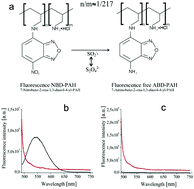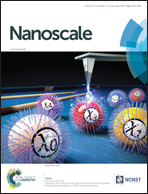A typical diffusion monitored by flow cytometry: slow diffusion of small molecules in polyelectrolyte multilayers†
Abstract
An innovative approach has been developed to measure small molecule diffusion in polyelectrolyte multilayers (PEMs) assembled on colloidal particles by means of flow cytometry (FACS). FACS allows changes in fluorescence emission as a function of time to be recorded per particle in a colloidal dispersion. Dithionite, S2O42−, diffusion in PEMs composed of polyallylamine hydrochloride (PAH) and poly styrene sulfonate (PSS) assembled on silica particles has been studied by recording the quenching of (7-nitrobenz-2-oxa-1,3-diazol-4yl)amino (NBD) labelled PAH layers by FACS. NBD is reduced when it encounters dithionite, and is therefore no longer fluorescent. The decay in fluorescence will be used to follow the kinetics of dithionite diffusion. The fluorescence decay curves show slow diffusion that does not follow classical Fickean law. However, by assuming that the diffusion coefficient is time dependent and follows an inverse power law in an atypical diffusion case, it was possible to obtain an excellent fit for the decay curves.



 Please wait while we load your content...
Please wait while we load your content...